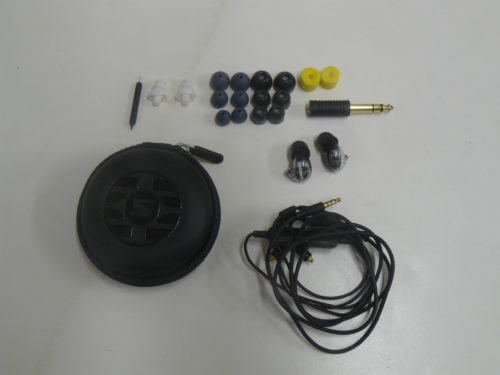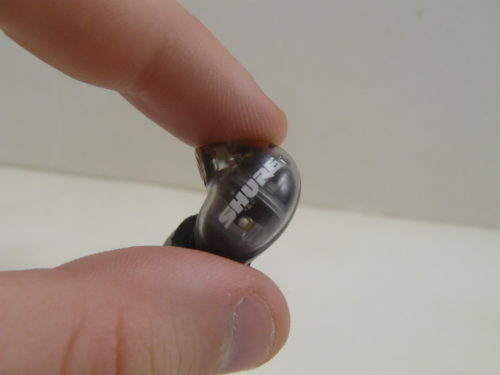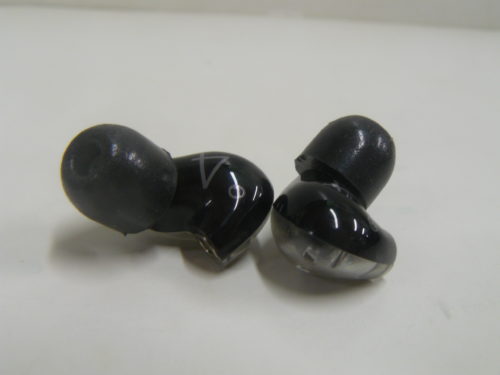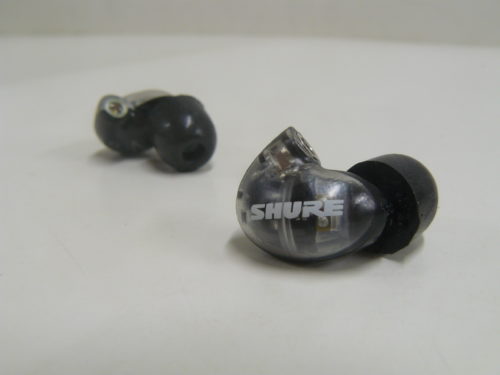I recently got a chance to listen to the Shure Aonic 3, and review it for Major HiFi. The Aonic series has been most popular due to the release of its first over-ear noise-canceling headphone this year, but now the name is being brought to more products from Shure. They’ve released a new line of IEMs numbered 3,4 and 5 respectively. In my review for the Aonic 3, I praised Shure for featuring a clean, and accurate sound signature at a generous price. For what it was, I saw the value in having a Shure ear monitor for analytical purposes. Now with the Aonic 4, I want to expect something a little different. Let’s see what the Aonic 4 brings to the table.

What You Get
The circular packaging of Shure’s Aonic products is sure to become a staple of this series. For the IEM line, in particular, most of the boxes include the same contents inside. The earpieces are inside connected to their MMCX 3.5mm cables. There’s also a quarter-inch adapter that comes with the Aonic 4, which is always appreciated. The carrying case is pretty standard by now, and shouldn’t be too far off from what you’re used to. Shure carries over its tip selection from the Aonic 3 here, which contains three soft flex and foam sleeves, with an extra pair of yellow foam tips. Included are also a pair of triple flange sleeves, which is nice even if I’m personally not a fan of their fit.

Look and Feel
With the Aonic IEM series, Shure isn’t necessarily going for looks. The Aonic 4 is more in line with Shure’s other earbud models, taking on a more Westone inspired design. The housing is shaped like a tiny pod, where the foam ear tips actually end up being bigger than the body of the IEM itself. The shell features a translucent look that gives you a peek at the inner components, giving the Aonic 4 a more unique architecture that sets it apart from Shure’s selection. As for comfort, I think this style is the better way to go for Shure’s IEMs. With the right tips, in which case I preferred the medium foam tips, the Aonic 4 can feel very secure. If it weren’t for the rather flimsy stock cable, I would say that this is a perfectly comfortable fit. However, the short, dense cable keeps it from being a complete success.

Design
The Aonic 4 is made using a dual-driver hybrid, the first one made by Shure. It uses a combination of dynamic and balanced armatures, with a special acoustic pathway system. This design aims to deliver a dynamic bass with extended high-frequency detail and natural separation. It’s a considerable amount of tech for such a tiny housing structure. The stock cable includes a three-button control panel, with payback and volume actions. It also utilizes an integrated microphone for taking phone calls. If you’re looking for a wired IEM that can take phone calls, this is a fantastic option. You can also use the Aonic 4 wirelessly if you have one of Shure’s wireless adapters or another MMCX system like the IBasso CF01.
Output
Shure couldn’t have made the Aonic 4 easier to drive. With an impedance of only 7 Ohms, you’ll be able to get significant output from any laptop, smartphone, or any device with a 3.5mm headphone port. It holds a frequency response of 20Hz-19kHz, which is pretty standard, but let’s see what sound quality Shure brings to the Aonic 4.

Soundstage
One of the main draws of the Aonic 4 is its advertised sound isolation. While this feature is effective in filtering out most ambient noise, my concern becomes how it affects sound signature. My worries quickly faded when I started listening to my first track selection. The Aonic 4 bolsters an immaculate soundstage as for as consumer IEMs are concerned. It was immediately apparent to me that the Aonic 4 had this immersive quality that even rivaled some prestige, audiophile models from other brands.
The Aonic’s capability of handling so many elements and cleanly separating them in a deeply layered fashion is quite impressive. It accomplishes a sense of stereo depth by maintaining spatial accuracy with natural imaging. Everything appears as its suppose to in the mix and uses its depth to bring out a more forward sounding image that sometimes comes out of your head, much like an open-back headphone. Each Stevie Wonder track I listened to off of Songs on the Key of Life presents his voice so naturally, its almost as if it’s appearing right on the edge of my face. On the track “If It’s Magic” Stevie’s voice is given a clear spotlight, as the lower strings glide majestically in the stereo field just underneath. It was a truly unexpected and satisfying experience.
Low End
This is a thicker bass that the Aonic 3, but it never overcrowds its resonance. There’s a significant punch to some tracks, while also presenting some clean and textures. The response appears with a significant amount of headroom to express some impressive clarity, making for a highly dynamic timbre that does a good job accurately portraying bass tonality with some added coloration in some bands. The track “Cossacks Are” by Scott Walker features an aggressive kick drum mixed with a foreboding synth-bass drone that layers together perfectly on the Aonic 4, showcasing the feeling of dread in your bones.
Mids
Low mids take some prominence, but overall the mid-range exceeds in forming a complete and balanced signature. You get a mostly full response with clean timbral qualities from each mid-band. The low mids give vocal register from the likes of Lou Reed a vibrating smoothness that presents his voice with direction and authority. Upper mids don’t receive the same emphasis but are still clear and consistent with the sound signature.
Highs
Treble textures are very subtle but perform a naturalistic but semi-bright tonality that never distracts. There’s a good amount of sparkle to acoustic and percussion instruments, like the right channel strums on the track “Saturn” by Stevie Wonder, which is exceptionally crisp. The highs present the most amount of detail in the sound signature, with certain artifacts becoming more noticeable. It’s a pleasant response that provided the most accuracy out of the Aonic 4.
Summary
I am very impressed by the Aonic 4. Shure brought the Aonic brand of IEMs to a new standard, sporting their best fit, and their most satisfying IEM soundstage so far. Honestly, that soundstage by itself makes the Aonic 4 more than worth its $299 price point, since it’s hard to rival anything else in this range. If you’re looking for a wired IEM but aren’t a fan of the higher-priced audiophile brands, the Aonic 4 might be you’re the best bet for all-around immersion.
Pros and Cons
Pros: Soundstage, fit, versatility, tip selection
Cons: Stock cable
The Shure Aonic 4 is available at Audio 46.
MAJORHIFI may get a commission from retail offers.
MAJORHIFI may receive commissions from retail offers.








